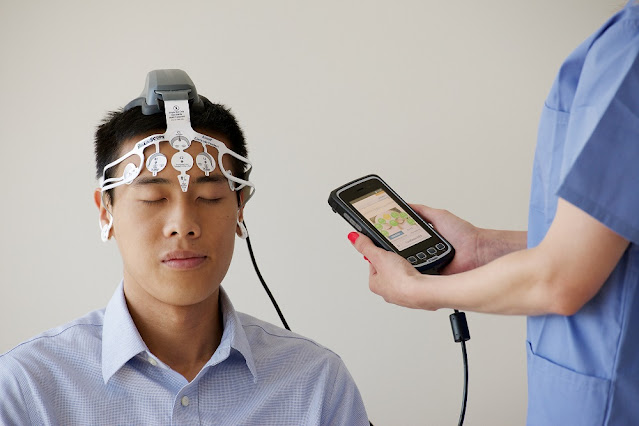Minimal Residual Disease Testing: A Powerful Tool for Monitoring Cancer Treatment Effectiveness
 |
| Minimal Residual Disease Testing |
What is Minimal Residual Disease Testing?
Minimal residual disease (MRD) testing refers to highly sensitive techniques
used to detect small numbers of cancer cells that may still be present in the
body after cancer treatment. These techniques can identify just a single cancer
cell among millions of normal cells. By detecting MRD, physicians can gain
valuable insights into how well a treatment is working and a patient's risk for
future relapse.
How Minimal Residual Disease Testing Works
Minimal
Residual Disease Testing works by taking
advantage of unique molecular signatures found on cancer cells. All cells, both
healthy and cancerous, have identifying markers on their surface. For many types
of cancers, researchers have identified markers that are specific to those
cancer types.
During MRD testing, a small sample of bone marrow, blood or other tissues is
collected from the patient after treatment. Sensitive molecular techniques like
polymerase chain reaction (PCR) and next-generation sequencing are then used to
detect the presence of any cancer-specific markers. If markers for the
patient's particular cancer are found, even if just a single cell, it indicates
minimal residual disease is still present following treatment.
What Types of Cancer Can Be Monitored With MRD Testing?
Currently, MRD testing is standard practice for assessing treatment response in
several hematological or blood cancer types where unique molecular markers have
been well-established:
- Acute lymphoblastic leukemia (ALL): MRD testing via PCR is the gold standard
for monitoring pediatric and adult ALL. It provides crucial information to help
guide further treatment decisions.
- Multiple myeloma: Testing for myeloma-specific immunoglobulin markers in the
bone marrow via PCR or flow cytometry enables close monitoring of response to
drug therapies.
- Acute myeloid leukemia (AML): While challenges remain, PCR is increasingly
used to detect gene mutations characteristic of individual patients' AML to
track treatment response.
Research is also exploring applications of MRD testing for solid tumor cancers
like breast cancer, neuroblastoma, colorectal cancer, and others where
cancer-specific genetic alterations can serve as biomarkers. As techniques
advance, MRD may become standard for more cancer types.
What Do MRD Test Results Indicate?
An MRD-negative result, meaning no cancer cells were detected, generally
indicates a complete treatment response and very low risk of relapse. This is
considered the optimal outcome.
In contrast, persistent or increasing MRD post-treatment is a powerful
predictor of worse outcome. The presence of MRD means small numbers of cancer
cells survived therapy and remain in the body. These individuals have a high
likelihood of relapse if no further treatment is given.
MRD levels also provide a quantitative measure of treatment response. A test
may report fewer than one cancer cell per 100,000 normal cells compared to one
per 10,000, for example. Lower levels of residual disease portend a better
prognosis.
Serial MRD testing enables physicians to monitor changes in residual disease
burden over time in response to different therapies. Declining levels signal
treatment is effectively targeting remaining cancer cells while rising levels
may prompt adjustment of the treatment plan.
How MRD Tests Guide Patient Management
Information from MRD testing plays a crucial role in clinical decision-making
and personalized treatment:
- For those who are MRD-negative, standard post-treatment surveillance may
suffice.
- MRD-positive patients are often recommended maintenance therapies or stem
cell transplants to eliminate minimal residual disease and prevent relapse.
- Sequential MRD testing guides physicians in continuing, modifying or stopping
certain drug regimens based on treatment response.
- It may help identify patients who would benefit from participating in
clinical trials of new investigational drugs aimed at eradicating residual
disease.
The Future of MRD Testing
As technology advances, MRD testing is getting even more sensitive, enabling
detection of one cancer cell within a million normal cells or fewer.
Researchers are also working to expand MRD applications to more cancer types.
integration of MRD results into clinical practice will likely
continue growing, playing an important role in personalized, risk-adapted
treatment approaches. The ultimate goal is complete eradication of residual
disease to achieve long-term remission for all cancer patients. With
refinements, MRD may one day become a standard marker of cure across many
cancers.
Get
more insights on – Minimal
Residual Disease Testing
About Author:
Alice Mutum is a seasoned senior content editor at Coherent
Market Insights, leveraging extensive expertise gained from her previous role
as a content writer. With seven years in content development, Alice masterfully
employs SEO best practices and cutting-edge digital marketing strategies to
craft high-ranking, impactful content. As an editor, she meticulously ensures
flawless grammar and punctuation, precise data accuracy, and perfect alignment
with audience needs in every research report. Alice's dedication to excellence
and her strategic approach to content make her an invaluable asset in the world
of market insights.
(LinkedIn: www.linkedin.com/in/alice-mutum-3b247b137 )



Comments
Post a Comment